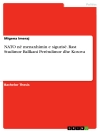Orthodox reporting and conventional scholarship focuses on the factors that distinguish each presidential contest and then attempts to explain them. This book rather, demonstrates that the politics of presidential nomination has been remarkably stable in the United States since the 1830s and right through to 2020. A common bandwagon dynamic, rolling once through party organizations and now through presidential primaries, permits a simple measure that has predicted nominations well before the decisive threshold was reached, while allowing precise comparisons across the years. So it becomes possible to separate the handful of things that matter for winnowing a large and diverse society into two individual presidential nominees. This funnel of causality moves through the occupational and careers seedbeds of a field of presidential aspirants, squeezing these fields by way of a small set of structural shapers, until party factions and factional struggles—not rules of the game, notcandidate characteristics, not nominating strategies, nor all the other ephemera so beloved of commentators and observers—actually choose a given nominee.
Table des matières
1. Brave New World or Latest Twists on a Familiar Narrative?.- 2. Deep Channels to a Presidency: Occupations and Careers.- 3. Structural Influences, the Democrats: Factions and Constituencies.- 4. Structural Influences, the Republicans: Factions and Constituencies.- 5. The Usual Suspects: Nominating Rules and Nominating Politics.- 6. The Usual Suspects: Candidate Strategies and State Sequences.- 7. Eternal Bandwagon: Nominating Politics and the General Election.
A propos de l’auteur
Byron E. Shafer is Hawkins Chair of Political Science Emeritus, University of Wisconsin, Madison, USA. His most recent book with Regina L. Wagner is
The Long War Over Party Structure: Democratic Representation and Policy Responsiveness in American Politics (2019).
Elizabeth M. Sawyer is a graduate student in Political Science at the University of Wisconsin, Madison, USA. She is currently completing a doctoral dissertation on ‘How the Sausage Gets Made: Constitutions, Rules and Norms in State Legislature.’ She also studies presidential nominations, campaign finance, and the nature of effective representation.












